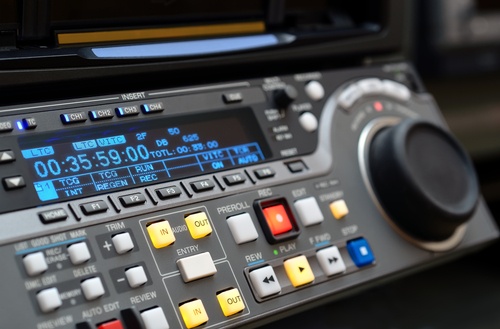2018
am
History of Broadcast Video Tapes Written by: Brandon Harris, Smooth Photo Scanning Services

With the move to digital, many people have forgotten what came before and how good it was. For years TV studios, movies, and other companies all over the world used professional broadcast quality videotapes. Two styles of tape, in particular, saw widespread use; Betacam and DVC.
The History of Betacam
Betacam tapes, made by Sony, went through several versions; starting with Betacam then Betacam SP and working their way up to Digital Betacam and Betacam SX. Each new version improved the quality that could be captured as well as the length of the captures. Even Dora the Explorer was originally put onto Betacam tapes, we should know, we transferred the original pilot to digital.
By the time DigiBeta came out; the tapes were able to look as good as a modern movie if used properly. There are thousands of these tapes sitting in offices and archives to this day, housing a plethora of TV shows, news reports, company training videos, etc. The tapes were intended to last a long time, but even tapes as good as these fade and decay over time. So if you have a collection of Beta tapes sitting around, get them transferred to digital as soon as possible.
The History of Digital Video (DV)
DVC tapes, made by Panasonic, rose in popularity alongside DVDs since they captured digital video. Whereas Betacam had to develop and evolve to arrive at a digital video format (DigiBeta). In order to try and capitalize on the professional market; DV released several variants for professional use including DVCPRO, DVCPRO 50, and DVCPRO P.
The original DVCPRO was made for use with electronic news gathering, whereas DVCPRO 50 was made for more cinematic ventures. Between the two there was DVCPRO P (P for Progressive) which was made to improve upon newsgathering and to be used for sports recordings.
In retaliation, Sony also came out with their own DV format known as DVCAM. It was wider and faster than DVCPRO and used locked audio so the tape could be copied multiple times without loss of synchronization.
Across the country, there are tons of DV tapes in people’s basements or attics, university libraries, and studio archives. And just like Betacams, they need to be digitized sooner rather than later since they are degrading as you read this.
How to Digitize Broadcast Tapes?
Whether you have a small collection of broadcast tapes or work for an organization with a vast archive, the benefits of converting broadcast video tapes to digital are many. Having your footage backed up to digital ensures that those important moments will live on forever. Digital files don’t deteriorate or fade over time; and can be copied, shared, and enjoyed with ease.

If you want to transfer Betacam tapes, DVCPRO, or DVCAM to digital yourself, the first step is acquiring a machine to play the tapes. Keep in mind that this can be rather costly given the age of the equipment and thus its rarity. You’ll also need a computer with a fairly powerful graphics card and IEEE 1394 firewire input (for the best quality).
Once you have the appropriate equipment you’ll need software to capture the footage. You can accomplish this simply with Adobe Premiere Pro. Just double-check your capture settings, tell Premiere the device you’re using, rewind the tape, and hit capture! The capture process will happen in real-time so a 30-minute tape will take 30 minutes to transfer.
This is the easiest and cleanest set-up to capture and digitize your broadcast tape archive, ensuring that the signal goes straight from the tape to your computer without any loss of quality. There’s also the added benefit that once it’s captured, you already have Premiere Pro open and can get to work on editing your footage!
If this seems like more work than you or your organization are up for handling in-house, feel free to give us a call, and will be happy to provide a quote to digitize your collection.
The sooner you start, the better the quality; so start now.


